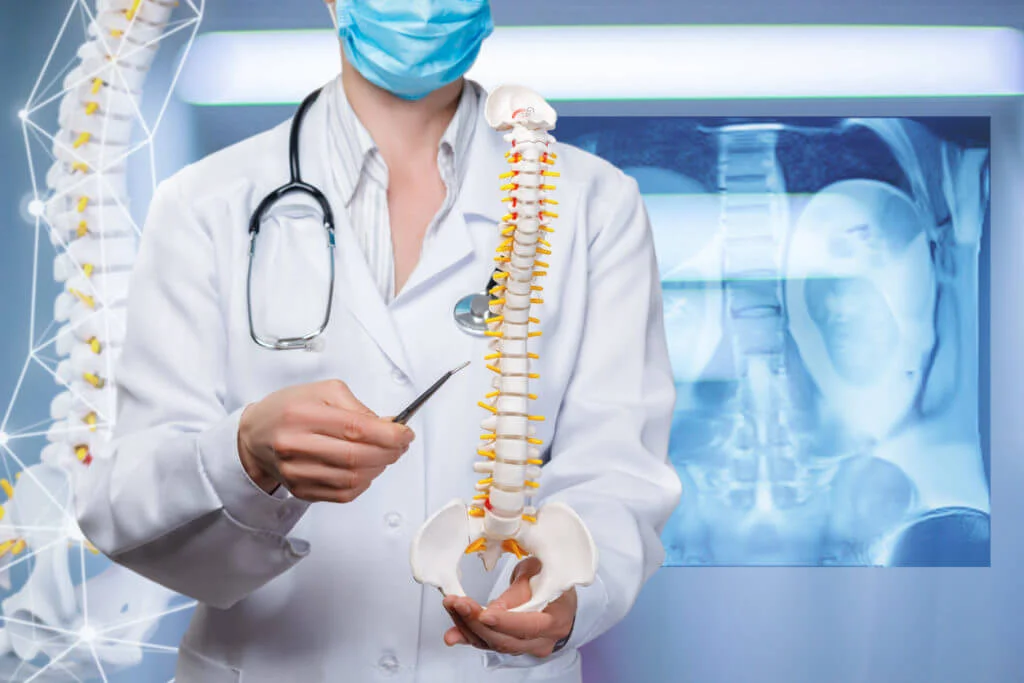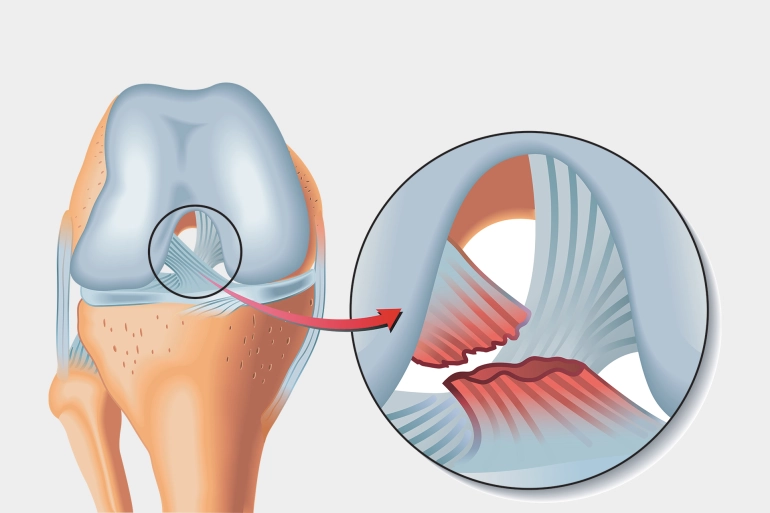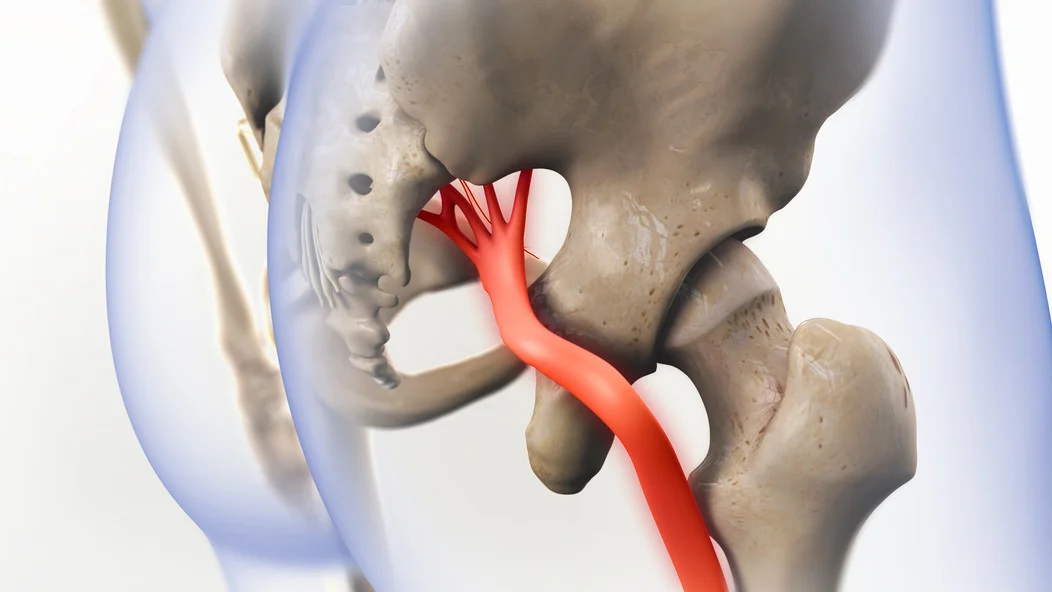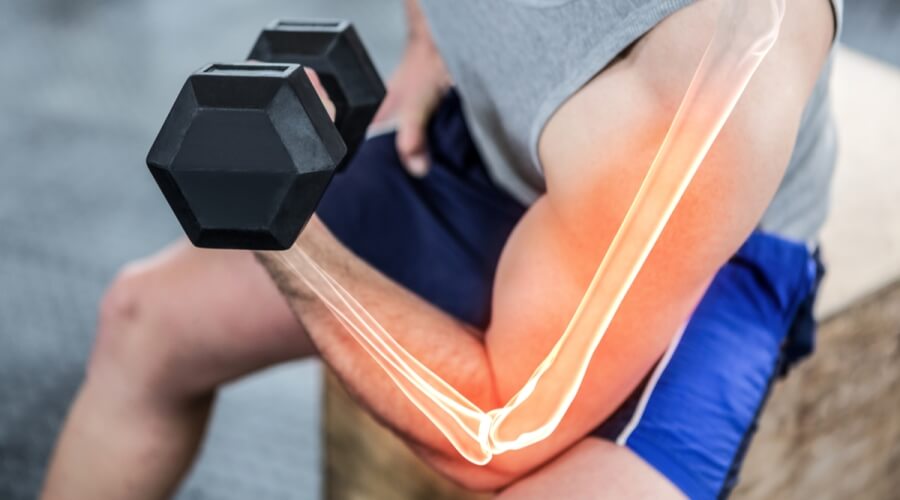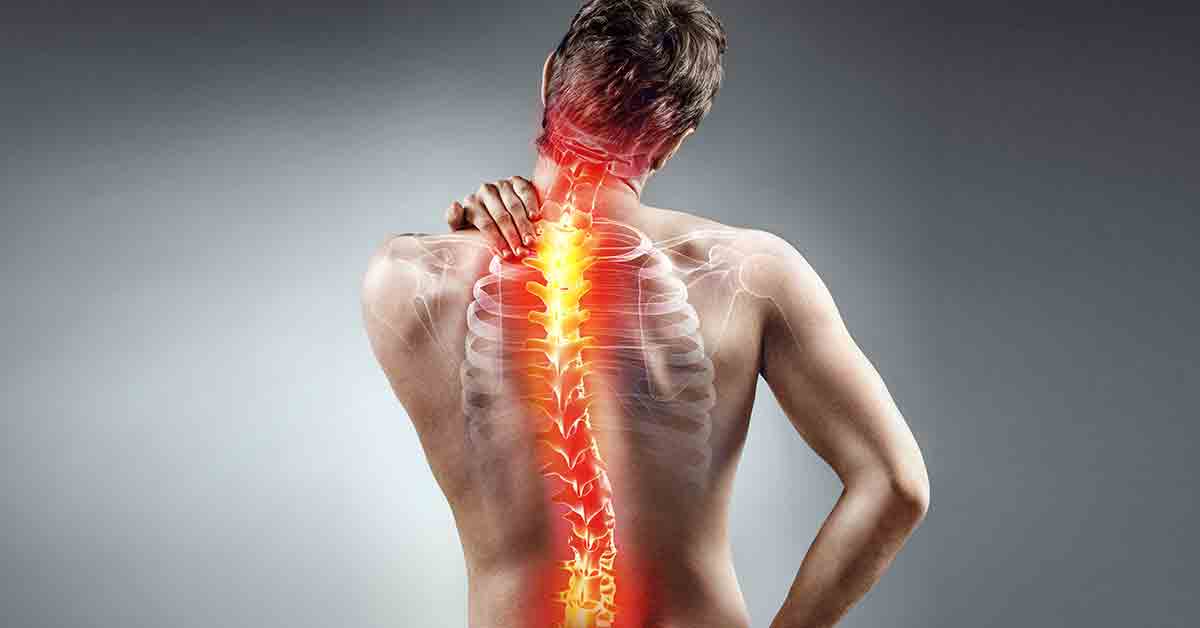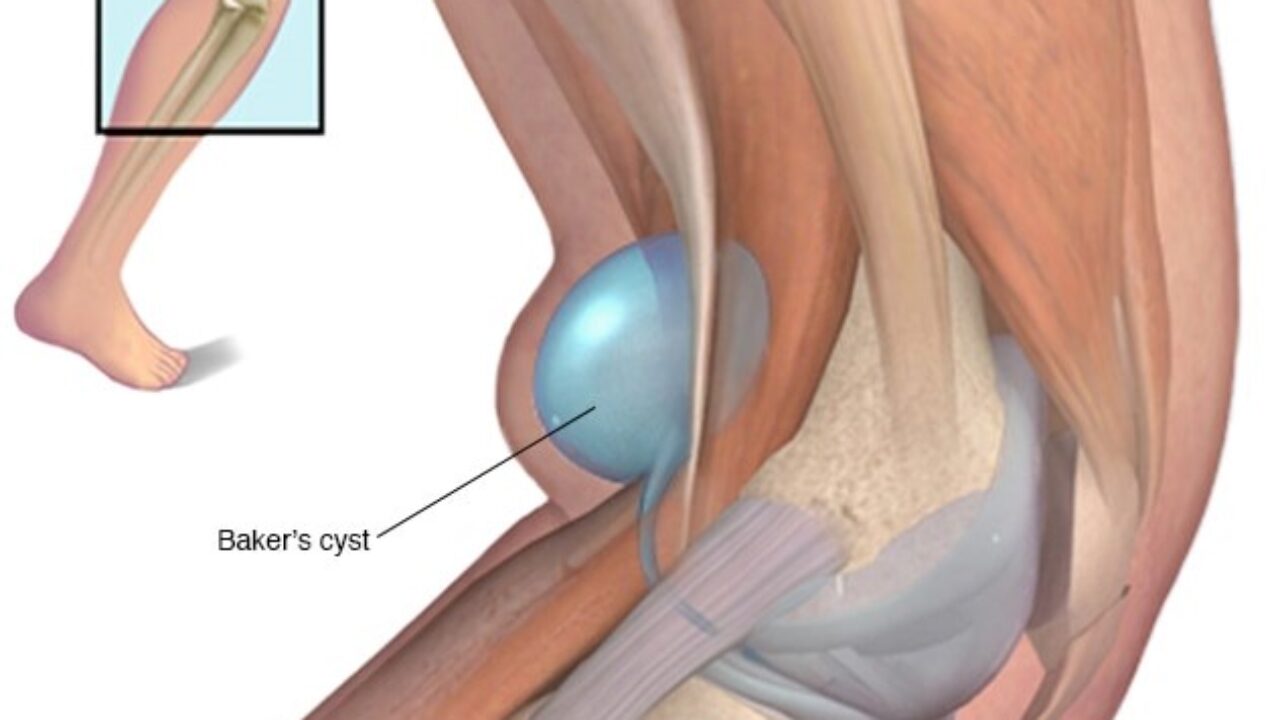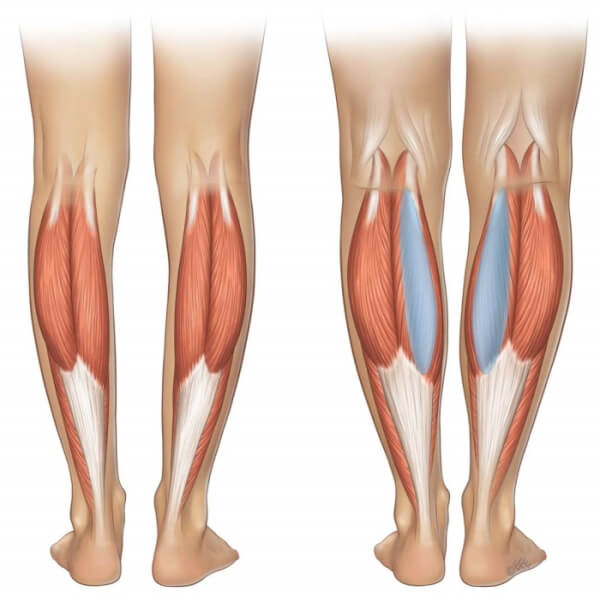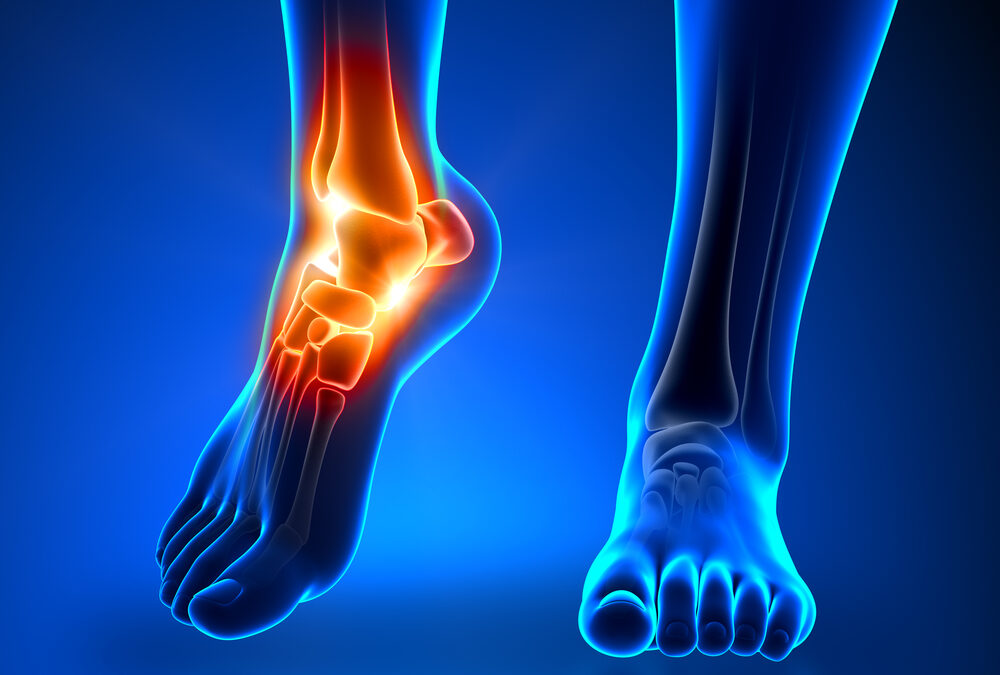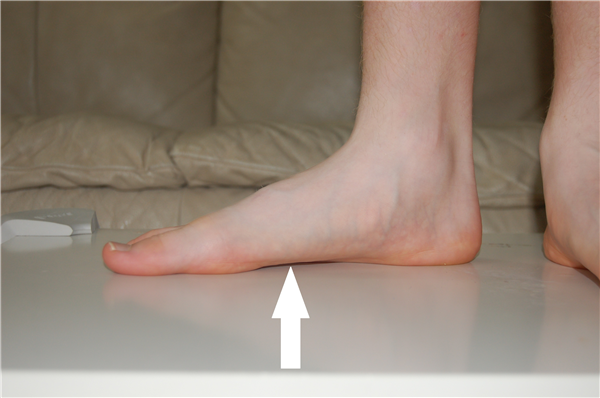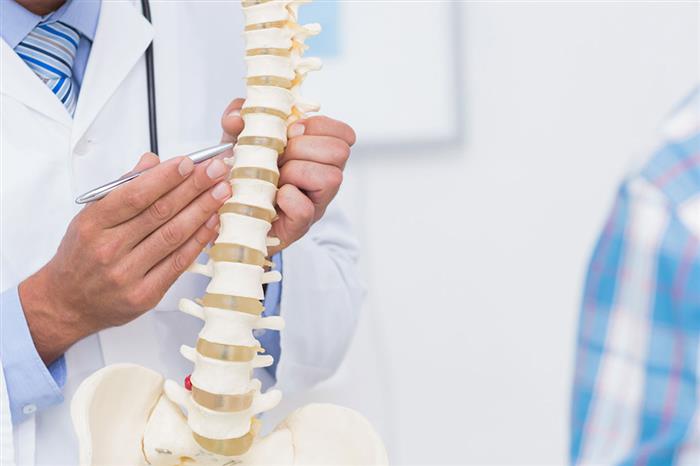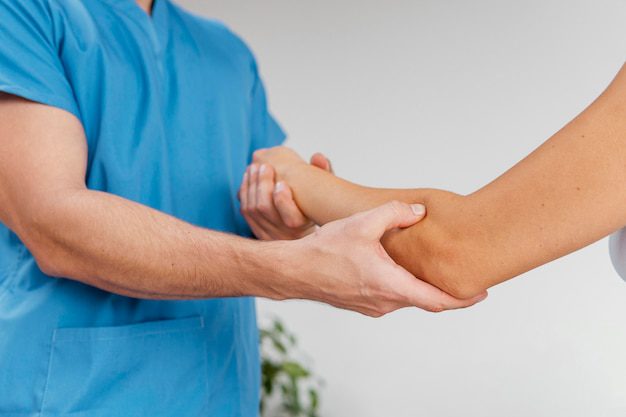Know more about Arthroscopic scoliosis surgery and its cost in Egypt
Arthroscopic scoliosis surgery is one of the distinctive operations that often produces effective results. What are the details and steps of this operation, how can one benefit from it and maintain its distinctive results, and how does the patient know whether he needs this operation or not? All these questions and more will be answered in detail in this article. The article is detailed, so follow us.
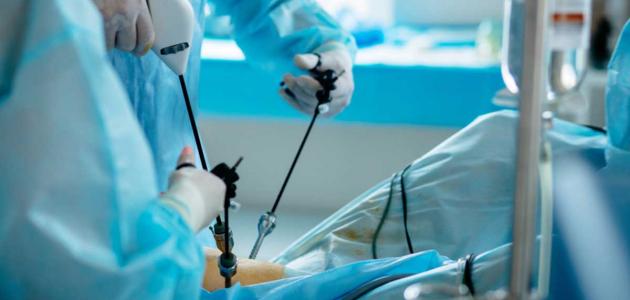
Arthroscopic scoliosis surgery
The endoscopic scoliosis operation is one of the most important operations that aims to treat various spinal deviations, through a thin and small tube that ends with a very precise and small camera that is inserted into the back, with the aim of photographing the spine and all the tissues surrounding it, as many tools are inserted. Surgical surgery is done through a group of openings or holes that are made in the back.
The goal of this is to remove the damaged tissues and correct the deviations in the spine, as this requires a period of rest and recovery, which will work to reduce pain, modify the body’s functions, and make it continue its work with the best desired. efficiency ever.
What is scoliosis?
Scoliosis: It is a term sometimes used to refer to problems and diseases that affect the spine or back. These problems can be diverse and include spinal sprain, disc herniation, arthritis, muscle and tendon pain, and muscle tension. Therefore, it is important to differentiate between these problems and serious diseases in the back, such as scoliosis. Severe lumbar disc or cancerous tumor. If you suffer from back pain or suspect a problem in the spine, it is preferable to consult a doctor or orthopedic specialist to provide an accurate evaluation, diagnosis, and appropriate treatment options.
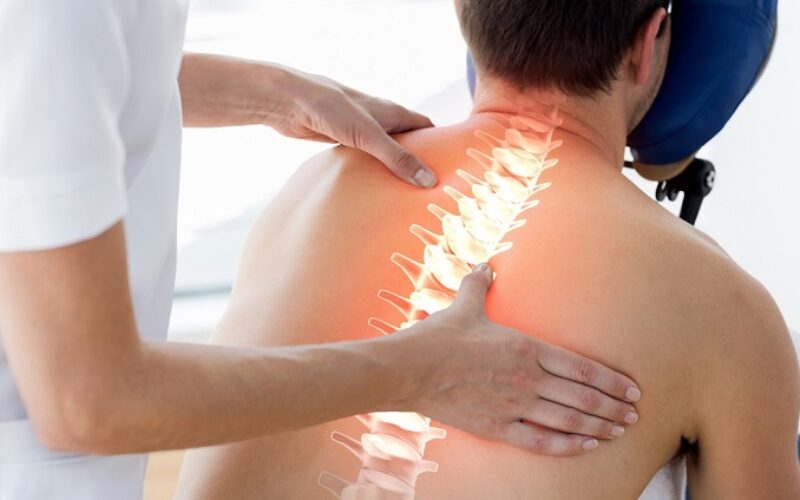
Spinal deformities
In fact, the spine can suffer from many difficult deformities, which are curves that are not normal or consistent with the general appearance of the human body. They may occur for any reason, such as aging or other reasons. Among the most important and prominent of these types, we mention to you the following:
- Spinal deviations such as scoliosis: a lateral deviation of the spine. It can be the result of multiple causes and often appears in adolescence. Likewise, an abnormal forward curve of the spine can be the result of structural or metabolic disorders.
- Arthritis such as rheumatoid arthritis : a condition that causes inflammation in the joints and may lead to deformities in the spine and other joints, as well as psoriatic arthritis, which can affect the vertebral joints and cause deformities in the spine.
- Congenital anomalies such as vertebrae vertebrae, when only one vertebra of the spine is abnormal, and nerve cell defects, which include conditions such as meninges, central nervous sclerosis, and spinal cord involvement.
- Disc problems such as herniated disc: When a herniated disc descends between two vertebrae and puts pressure on the nerves and narrowing of the spinal canal, as the narrowing in the spinal canal can cause pressure on the spinal cord and nerves.
- Exposure to injuries such as spinal fractures: vertebrae break as a result of an accident or injury, and may lead to permanent deformities.
- Bone diseases such as osteoporosis: These are diseases that add weakness to the bones and increase the possibility of fractures in the spine.
Do I need surgery for scoliosis?
The patient needs a scoliosis surgery in the back when there is a medical need to correct a functional problem in the spine that hinders his daily life or causes severe pain or damage to the nerves or spinal cord. In fact, there are several cases and problems that can require a scoliosis surgery on the back, including: fractures, injuries, various types of herniated discs, lumbar spinal stenosis, in addition to a large group of tumors in the spine.
In any case, the surgery must be performed carefully based on a comprehensive assessment of the patient’s condition. For many of these cases, other treatments such as physical therapy or non-surgical medical treatment can be the initial options before resorting to surgery, and the decision to perform surgery also depends on Factors such as severity of pain, progression of structural damage, and individual patient needs. The patient should also consult a specialized orthopedic or spine surgeon to estimate the need for the operation and guide them appropriately.
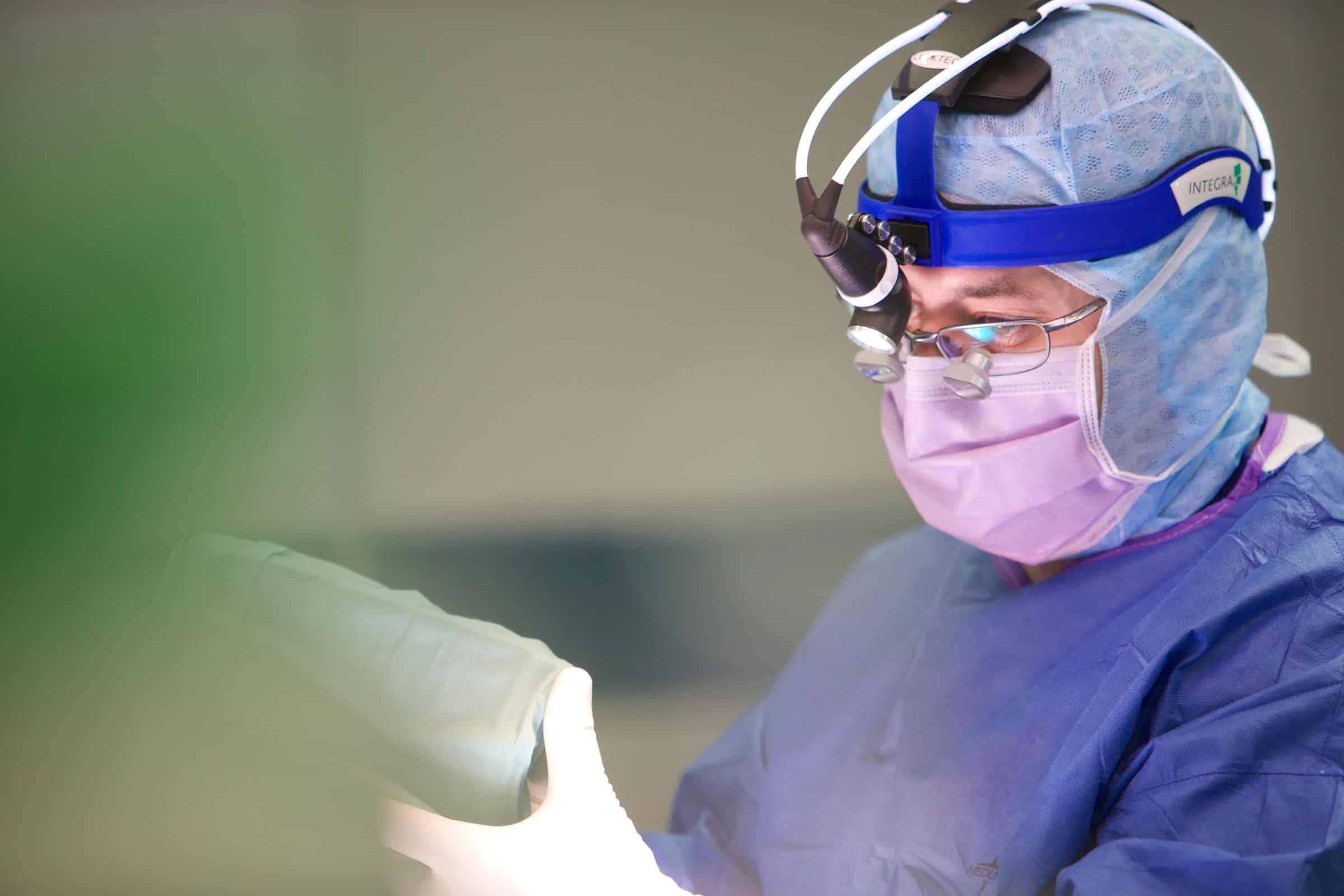
Does scoliosis return after the operation?
Scoliosis in the back can return after the operation in some cases, but this depends on several factors, including the type of operation, the person’s condition, and how to follow up on spinal care. Here are some points to take into consideration:
- The chances of scoliosis returning depend on how well the surgery corrected the structural problem in the spine.
- The patient must comply with the instructions and treatment recommended by the surgeon and medical team, which includes sitting, standing, moving in the correct way, and working to strengthen the back and abdominal muscles.
- Factors such as aging, general health status, and lifestyle may affect the chances of scoliosis returning.
- If there are other structural or medical problems affecting the spine or a person’s medical condition, these factors may be important in determining the possibility of scoliosis returning.
- It is important that the person be followed up by a specialized medical team after surgery to evaluate the development of the condition and address any problems that arise.
Is scoliosis surgery painful?
Scoliosis surgery on the spine can be painful for some patients and the extent of the pain depends on several factors, including the type of surgery, the extent of the condition, and the person’s response to pain. Here are some points to consider:
- Scoliosis surgeries vary in type and complexity and some surgeries may be more complex and take longer, and therefore may have a greater recovery time and pain.
- Doctors usually use local or general anesthesia during surgery to reduce pain. Regular pain may require medications to relieve it.
- During the recovery period after surgery, the patient may feel pain and swelling and the pain is usually directed by medications and pain management techniques.
- The extent of pain during the recovery period depends on the severity of the surgery and the body’s ability to recover. The patient must carefully follow the doctor’s instructions to ensure that pain is reduced and the recovery process is accelerated.
- The pain usually improves gradually over time, taking into account the patient’s commitment to the necessary care and treatment.
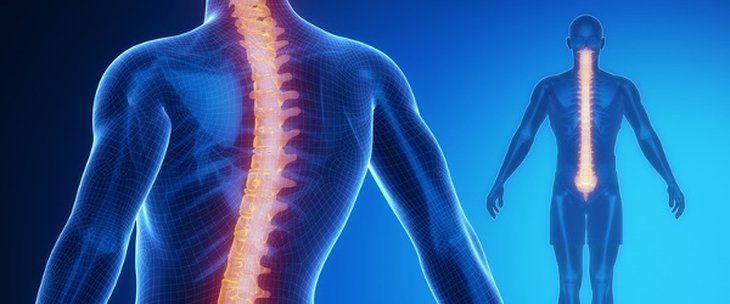
Advantages of arthroscopic spine surgery
Arthroscopic spine surgery is an advanced surgical technique that offers many advantages over traditional open surgery. Here are some of the main advantages of arthroscopic spine surgery:
- Reducing the size of the wound and interfering with normal tissue can significantly reduce pain after surgery and this may have less impact on the muscles and nerves surrounding the spine.
- Because of the smaller incision and less tissue interference, patients can return to daily activity more quickly.
- Because the incision is smaller in arthroscopic spine surgery , there is less possibility of infection.
- Laparoscopic surgical techniques can reduce blood loss during surgery, reducing the patient’s need to donate blood or use blood supplements.
- Since the incision is small and often performed in inconspicuous areas of the body, the aesthetic result is usually better compared to traditional surgery.
- Surgery time and overall recovery time can reduce the length of hospital stay.
- Arthroscopic surgical techniques allow better access to delicate areas of the spine, allowing the surgeon to perform repairs with greater precision.
- Small, precise endoscopic access allows the surgeon little interference with the muscles surrounding the spine, which can reduce complications such as muscle damage.
What is the success rate of scoliosis surgery?
Often, one of the most common questions that many scoliosis patients ask their doctors is whether the success rates of scoliosis surgery are great or not. In fact, the scoliosis process depends on the basic factors in it, and the most prominent of these factors is the ability of many individuals to deal with their body in the correct way after the operation. And adhere to the instructions of your doctor and others, as many doctors confirm that the process of scoliosis is 70% and the chances of complications occurring are between 2-3%, and it is also greatly affected by the flexibility that the individual has in his spine.
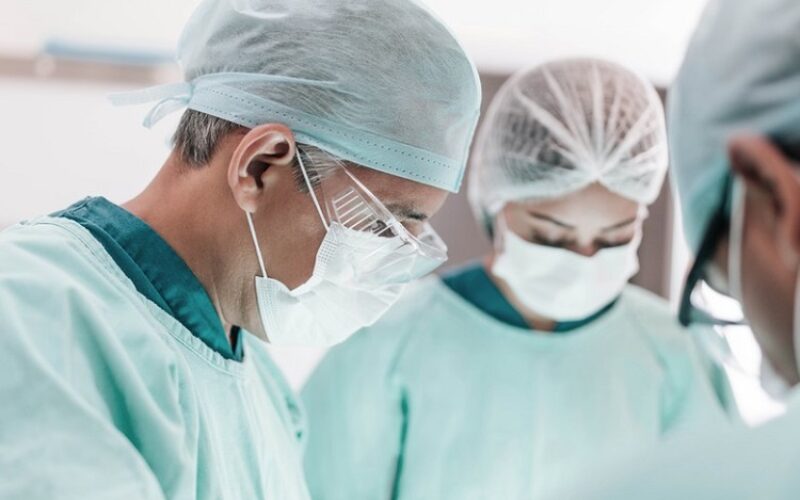
Can scoliosis be treated without surgery?
Scoliosis in the back can be treated without resorting to surgery in many cases, depending on the type and severity of scoliosis and the patient’s condition. Here are some methods that can be used to treat scoliosis without surgery:
- Physical therapy and muscle-strengthening exercises can help improve the position of the spine and strengthen the muscles around it.
- Nonsteroidal anti-inflammatory drugs (NSAIDs) can be used to relieve pain and inflammation.
- Painkilling medications can help relieve pain.
- In some serious cases that do not respond to non-surgical treatments, surgery may be needed to correct scoliosis.
- Occupational therapy can help with learning how to improve body posture, movement, and techniques to relieve pain.
- In some cases, braces or support devices may be used to correct scoliosis or to help maintain correct spinal posture.
Tips after scoliosis surgery?
After surgery to treat scoliosis in the back, the patient must follow the directions of the surgeon and medical team to ensure a healthy recovery and reduce any potential complications. Here are some important tips for self-care after surgery:
- The patient must refrain from any strenuous activity and adequate rest during the first period.
- The wound should be monitored, looking for any signs of inflammation or infection, and any changes reported to the surgeon.
- Carefully follow your surgeon’s directions for taking prescribed medications, including pain relievers and antibiotics if required.
- As directed by your surgeon, light exercises and physical therapy sessions may begin to strengthen muscles and improve motor control.
- You must eat a healthy, balanced diet to promote the healing process and ensure access to the necessary nutrients.
- Avoid sitting for long periods of time and bending or twisting the back. You must sit and stand correctly to prevent any tension on the spine.
- Avoid lifting heavy objects or doing activities that put excessive pressure on the spine.
- It is important to check in with your surgeon and care team regularly to monitor progress and ensure that the healing process is going well.
- The patient must adhere to the surgeon’s directions and take careful self-care during the postoperative period.
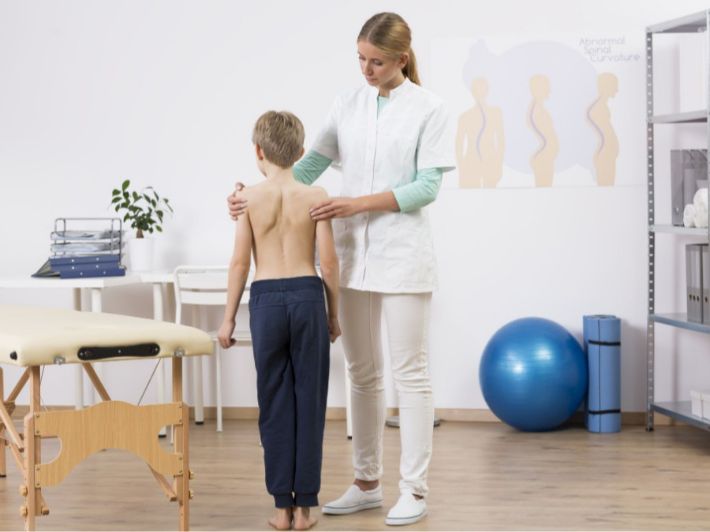
Cases requiring arthroscopic spine surgery
Arthroscopic spine surgery is a low-risk surgical procedure used to relieve pain caused by changes that occur in the spine due to aging, injuries, herniated disc, lumbar spinal stenosis, tumors in the spine, etc. Below we show you the most important and prominent cases in which it is possible That you need arthroscopic spine surgery is as follows:
- Individuals with general muscle weakness, in particular those with progressive neurological weakness.
- When the curve of the spine is significantly lateral and increases rapidly or causes severe pain or functional deformity.
- If the fibrous disc ruptures and puts pressure on the nerves, leading to severe pain and weakness in the extremes.
- If spinal stenosis becomes advanced and puts pressure on the spinal cord or nerves.
- When there are fractures of the vertebrae due to acute injury or chronic bone disease.
- If inflammation of the spine occurs as a result of a bacterial or viral infection, this condition can be lifelong.
- When there are malignant or benign tumors in the spine.
- In the case of congenital structural abnormalities that cause serious functional problems.
It is important that you follow up on your scoliosis condition with a specialized doctor on an ongoing basis, and in this regard, we advise you to Dr. Amr Amal , who is considered one of the most important and largest doctors in this field and is unparalleled at all, so do not hesitate to contact us.
How much does scoliosis surgery cost in Egypt?
Scoliosis surgery in Egypt is one of the distinctive operations that has many different types, specializations, and distinct treatments. One of the most important and things that it is important to discuss with your doctor is the costs of scoliosis surgery in Egypt, which usually range between 100 thousand pounds and 200 thousand pounds. Egypt.

